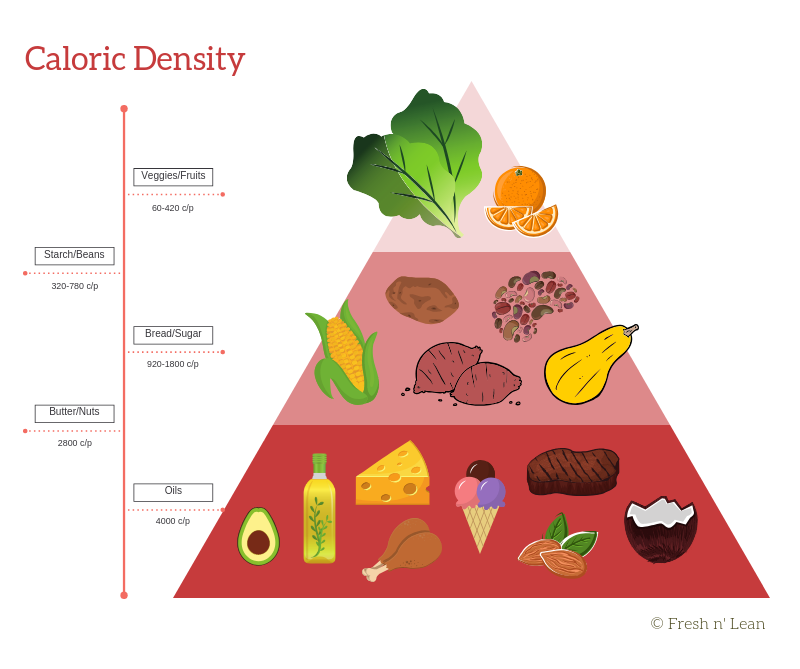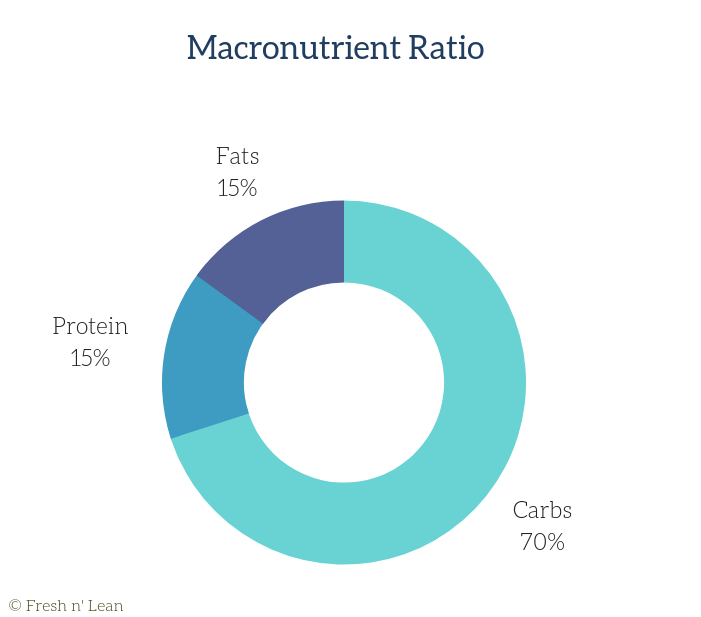SUMMARY
Wondering how you can have a beach-ready body all year round? The tips for maintaining a flat stomach include eating more plant-based foods and reducing your oil intake.
Fresh N’ Lean is the nation’s largest organic meal delivery service. Our tasty, chef-prepared cuisine is always fresh and never frozen, and we offer five convenient meal plans: Protein+, Keto, Paleo, Standard Vegan and Low-Carb Vegan. Choose Fresh N’ Lean for affordable nutrition, delivered to your doorstep.
Whether they admit it or not, most people would prefer to have a flat stomach.
These desires are not entirely vain — research suggests that where you store fat on your body is indicative of health, and that belly fat is the worst kind. Research has shown that weight gain specifically around your middle section is often visceral fat, the type of fat that encases internal organs. The more fat you have in your midsection, the higher your likelihood of developing chronic diseases such as diabetes and cardiovascular disease.
A more recent study, published in the Journal of the American Heart Association, found that having a “spare tire” around your middle is even worse for women’s heart health than men’s. Researchers followed 500,000 people between 40 and 69 for seven years in the UK, and found that women who carried more weight around their middle (measured by waist circumference, waist-to-hip ratio, or waist-to-height ratio) had a 10–20% greater risk of heart attack than women who were just heavier overall.
So how do you lose weight specifically around your middle, especially if you’re genetically programmed to gain weight there (an “apple” rather than a “pear” body shape?). Unfortunately, most of the advice people (and women in particular) get just tells them to lose weight by restricting calories and increasing their level of exercise.
This might work in the short term to drop pounds before bikini season or a wedding, but it is not sustainable over the long term. Eventually, the weight creeps back up. Not to mention, you will be miserable in the process. The best way to a flatter tummy is to take a systemic, lifestyle approach. By making small behavioral modifications, you can lose weight from your stomach as a side effect of better health.
There are no gimmicky steps here, but they will lead to lasting, true results.
1. Eat (mostly) whole unprocessed plants.

If you are a Fresh n’ Lean meal delivery subscriber, this one comes as no shock to you. Whether they advocate for an entirely plant-based diet or not, virtually every nutritionist and doctor will agree that you cannot go wrong with filling your plate with whole, unprocessed plants in their natural state. When you choose what kinds of plants to eat, focus on those that are the most nutrient dense, but least calorie dense.
What is caloric density, you ask?
Caloric density is a measure of how many calories are in a given weight of food, expressed as calories per pound. Higher-fat foods such as avocado, nuts, and nut butter — although all healthy — are among the most calorically dense plant foods, which explains why you will likely gain weight if you eat them in excess. Greens such as spinach and kale are very low in caloric density, so you would have to eat a ton of them to get pack on the pounds (in fact, they are so low calorie that your stomach will fill to capacity with fibre before you can eat too much).
Starchy plant foods such as potatoes and squash are somewhere in between — they are filling but not as calorically dense as overt fat foods, so you can actually eat quite a bit of these without gaining weight. Forget what you thought about carbs making you fat — it really depends what kinds of carbs. Sweet potatoes will keep you satiated but keep the weight off, while processed breads and pastas will likely lead to weight gain.
The great thing about eating vegetables and fruits in their natural state is that they contain a lot of fibre but not a lot of calories. So you can eat a whole big plate of food, and yet still not have consumed many calories. Compare that to eating processed carbohydrates or fleshy (and even lean) pieces of meat, and you will see that plants contain the least calories but most nutrition.
As a guideline, consider that vegetables contain about 60–195 calories/pound, fruits contain 140–420, starchy vegetables such as potatoes, pasta, rice, barley, and yams contain 320–630, beans and legumes contain 310–780, sugars such as honey, maple syrup, white table sugar contain 1,200–1,800, dry cereals such as crackers, chips, and popcorn contain 1,480–1,760, overt fats such as nuts, seeds, avocado, and butter contain 2,400–3,200, and finally oils contain a whopping 4,000 calories per pound.

2. Reduce oil.
As you can see from the chart above, the most calorically dense food — above and beyond even butter and nuts (at an average of 2,800 calories/pound) is oil. We’ve talked about this culprit on the blog before, and it includes all types of oil, whether coconut, olive, or any other kind. You may think that oil is healthy, but that is a misconception people have from the “Mediterranean diet” myth, which has been shown to be much less healthy than people thought.

Take the simple salad you order for lunch. It probably contains at least 2 tablespoons of olive oil in the dressing (if not also in the roasted veggies on top). That is 239 calories of pure fat. And it is very likely that you are eating much more fat than that per day. If you cut out — or at least vastly reduce your consumption of oil — you will create a calorie deficit without even realizing it, leading to weight loss, especially in the tummy area.
Some of the easiest ways to reduce oil in your diet include: sautéing with vegetable broth or water instead of oil, replacing oil in baking with applesauce or tofu, using non-stick pots and pans, using baking sheets, adding flavor to food using balsamic and other vinegars instead of oil, and ordering salads with dressing on the side in restaurants.
3. Watch out for your macronutrient ratio.
When it comes to losing weight, it matters how much overt fat we have in our diet. All foods contain fat, but some foods are mostly fat (e.g. dairy, meat, oil, avocado, nuts, etc.). By “overt” we mean that they are primarily fat. According to the National Academy of Sciences Institute of Medicine’s macronutrient recommendations for humans, we only need: 10% protein, 6% essential fats, and at least 130 grams of carbohydrates per day. The average person eats much more protein than that per day and definitely much more fat.
In fact, research on the longest-living populations around the world finds that the healthiest populations eat only about 15% of their calories from protein, 20% of their calories from fat, and 65% of their calories from whole carbohydrates. The Okinawa people of Japan, prior to their diets changing with globalization, ate 85% of their calories from Japanese sweet potatoes (carbohydrates) alone, and lived to ripe old ages with slender physiques. It turns out that indeed, “The fat you eat is the fat you wear.”
Although there is no conclusive evidence for the exact percentages you should aim for, somewhere in the range of 10–15% of both protein and fat and the rest carbohydrates in their whole unprocessed states (vegetables, fruits, starches, beans, etc.) is ideal. For a 2,000 calories diet, 15% means only about half an avocado and 2 tablespoons of nuts or seeds per day, and definitely no oil.

An easy way to keep track of these ratios for a couple of weeks until you get the hang of how much to eat is the website Cronometer, where you can enter your food and activity level. This is not to count calories, but instead to keep track of rough macronutrient proportions. You can even adjust the ideal macronutrient ratios for yourself in the settings.
The best part is, no calorie restriction — just eat whole plant foods until you are satiated.
Note: Some people may lose muscle mass with this macronutrient ratio so it’s not ideal for everyone.
4. Stay hydrated, but do not drink your calories.
You hear all the time that drinking plenty of water is essential for health. There does not seem to be some magic number — like 8 glasses a day — but simply, you should make sure you quench your thirst throughout the day with, ideally, filtered pure water. Limit your caffeine, and try to drink more green and herbal tea than coffee.
Be careful, however, not to drink your calories in the form of juices, smoothies, and protein drinks. Juices hardly satiate you, giving you a sugar high, and smoothies, though they may fill you temporarily, tend not to trigger your “I’m full” signals as readily.
As a nutritionist Sarah B. Krieger explains, “The fiber in whole fruit ‘acts as a net’ to slow down the process by which the body turns sugar from food into blood sugar, and though the smoothie still contains fiber, it has been pulverized during the blending process. As a result, you’re likely to feel hungrier again sooner after drinking the smoothie than you would have had you eaten the same fruits and vegetables whole.”
It goes without saying that you should really watch out for alcohol too, as it’s incredibly calorically dense. A couple of beers or a few glasses of wine, and you have drunk more calories than in a typical meal.
5. Avoid snacking between meals, and fast overnight.
Every few months, it seems there is a new diet fad being promoted, and the latest is undoubtedly intermittent fasting. The idea is based on the insight that in order to burn fat, our bodies need to be able to digest food and then return to a resting phase before we begin eating again. If we keep eating every couple of hours, we never allow it to get to that state, thus packing on the pounds.
There is some truth to this insight, as in our food-obsessed and stressed-out culture, we seem to eat constantly. The solution some have proposed is intermittent fasting, which means following a dietary regimen where you limit the “windows” during which you consume food and create pockets during which your body is allowed to rest. Sometimes, this takes the form of fasting for one day a week, or perhaps every other day.
The once a week or even once a month fasting idea is probably practical, but who is likely to eat only once every other day for long, especially when research now shows that it is not necessarily effective for weight loss?
A better approach is to simply avoid snacking in between meals. If you eat every few hours, then that will give your body enough of a break. Better yet, commit to fasting overnight, between dinner and breakfast, for about 12 hours a day. Say you eat breakfast at 8 a.m., lunch at noon, and dinner at 7, if you fast between 8 at night and 8 in the morning, that’s 12 hours and technically counts as intermittent fasting every day.
6. Do weight training.

Apart from food, other lifestyle factors also matter in terms of belly fat. No surprise, exercise is important. To get a flat stomach, most people think they need to do lots of cardio. Of course, cardio is important, since it burns calories and keeps your heart healthy. But if you want to tighten your tummy, you need to build muscle too.
While burning calories leads to weight loss, strength training is especially important for belly fat. Researchers at the Harvard T.H. Chan School of Public Health found that “healthy men who did 20 minutes of daily weight training had less of an age-related increase in abdominal fat compared with men who spent the same amount of time doing aerobic activities.”
7. Get plenty of sleep.
Finally, overall health is affected tremendously by how much sleep we get. If we do not get those 7–9 hours of daily Zzz…, we are likely not only to be in a bad mood, but also to crave extra calories to compensate for missing energy.
When sleep is restricted, our bodies produce higher levels of ghrelin, a hormone that triggers hunger and reduces energy expenditure. A study from the University of Chicago showed that weight loss was reduced by 55 percent when dieters limited how much they slept. So while you might spend the day eating perfectly and exercising, if you do not get enough sleep at night, you may sabotage your own efforts.
Try not to fight your body — if you need those nine hours, it’s better to get them and feel better than to try and be the kind of person that does fine with six. We are all different, and it’s best to simply embrace this variation rather than fight it. You will be a happy, and slimmer person for it.
—
Having a flat stomach is not as simple as following a short-term diet or even going on an occasional fast. It is the product of small behavioral modifications each day that add up to a slimmer you all year round.




